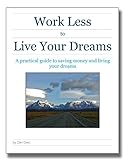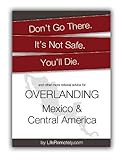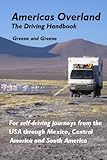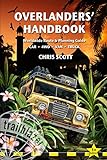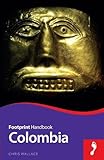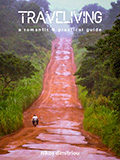Difference between revisions of "Colombia"
(→Navigation) |
(→GPS Maps of {{PAGENAME}}) |
||
| Line 161: | Line 161: | ||
* Garmin: Lists "Detailled" converage.<ref>[http://static.garmincdn.com/en/products/010-D1138-00/g/cm-md.jpg Garmin coverage map]</ref> | * Garmin: Lists "Detailled" converage.<ref>[http://static.garmincdn.com/en/products/010-D1138-00/g/cm-md.jpg Garmin coverage map]</ref> | ||
* TomTom: No map of Colombia. <ref>[http://uk.support.tomtom.com/app/answers/detail/a_id/9885/ TomTom Map availability]</ref> | * TomTom: No map of Colombia. <ref>[http://uk.support.tomtom.com/app/answers/detail/a_id/9885/ TomTom Map availability]</ref> | ||
| + | Colrut- probably the best free GPS map of Colombia updated often and includes tracks and trails[http://www.colrut.com/] | ||
==GPS co-ordinates for camping, propane, gas, repairs, etc. in {{PAGENAME}}== | ==GPS co-ordinates for camping, propane, gas, repairs, etc. in {{PAGENAME}}== | ||
Revision as of 13:03, 16 February 2013
Currency to display:
Contents
- 1 Entering Colombia with a Car or Motorbike
- 2 Driving in Colombia
- 3 Gas and Diesel price in Colombia
- 4 Safety and Security Considerations
- 5 Camping in Colombia
- 6 Navigation
- 7 Special Overland Travel interests
- 8 Vehicle Maintenance
- 9 Buy or sell a car or motorbike in Colombia
- 10 References
- 11 Helpful External links
Entering Colombia with a Car or Motorbike
Correct as of: December 2012
Required Paperwork
- Passport of registered owner (original and one copy)
- Vehicle registration (original and one copy)
- Drivers license (original and one copy)
Process at border
(To check if you need a travel Visa for Colombia, application instructions and fees see: Colombia Visa online application at VisaHQ.com)
- The owner of the vehicle gains entry at Immigration (Migración), including a stamp in their Passport.
- The owner must show the new passport stamp, original vehicle registration and original Drivers license to Customs (Aduana).
- The owner is issued a temporary import permit for the vehicle.
Cost of entry
Free.
Permitted length of stay
Many nationalities are allowed entry for 60 days. US citizens receive 90 days. The temporary import permit for the vehicle will match the duration of the owners entry.
Extension of stay
Unknown.
Describe the process to extend the permitted length of entry for the vehicle, if possible.
Storing a vehicle and temporarily leaving the country
Unknown.
Describe if/how a vehicle can be stored, and for how long.
Also mention if the owner / temporary importer can leave the country while the vehicle is in storage.
Exiting with a vehicle
By land to Ecuador
- The registered owner presents the temporary import paper to customs.
- The registered owner is stamped out of Colombia at immigration.
By ship, probably to Panama
See Crossing The Darien Gap for details.
Driving in Colombia
For a great overview, see: Driving in Colombia - fromAtoB.org
Insurance requirements
Insurance is mandatory in Colombia, and Police will most likely ask to see it. Like many South American countries, the insurance is called SOAT (Seguro Obligatorio Automóviles Transito).
Cost of insurance
Varies with the size of vehicle and size of the motor. Around $82.00 USD for the minimum period (two months) for a 4x4.
Where to purchase insurance
Insurance brokers are common in even the small towns and and usually affiliated with banks. Ask around for "SOAT". You can find one on the 8th floor of the white building found between Old Town and Getsemani in Cartagena - N10 25’30.6” W75 32’52.8”
Driving license
Technically an International Driving Permit is required.
In reality, showing a license from anywhere in the world seems to be good enough.
Driving side of road
Right,
Right hand drive vehicles are permitted without problem.
Mandatory items in vehicle
None.
Roads
General Road quality
Roads in Colombia are generally sealed and good quality. If you venture into the interior, expect gravel roads that may be impassable in the wet season.
Road signs
Road signs are common on highways and in towns. It's usually not too difficult to find signage to get where you are going.
Toll roads
All bigger highways are tolled in Colombia. Expect to pay roughly $5.00 USD every 100km or so.
Bribery in Colombia
Police bribery is refreshingly far less common in Colombia than in surrounding countries, and it's very unlikely that you will encounter it on the main roads. The Colombian tradition of police corruption is very much supply side, involving Colombians cautiously trying to get out of fines or jail time, not police seeking to intimidate people into giving them. When people are stopped by police/military seeking money, it's usually pretty unintimidating—a sort of weird asking for help with gas money.
Because of the security history of Colombia, police/military are everywhere along the roads, and you should expect to be waved over with some frequency. This is not a big deal. They will take a look at your car, ask you who you are (they rarely ask for identification, if you are clearly a foreigner), and then wave you on. They have a serious mission to look for criminals/rebels, and aren't interested in tourists beyond a friendly curiosity.
There is a campaign of sorts to emphasize that the military is on your side. Flash a thumbs up at the police/military checkpoints, and they will give you a thumbs up in return, and are less likely to pull you over!
See the bribery tips page for general advice.
Checkpoints
Police and Military checkpoints are common in Colombia. You will be asked to present your Passport, Vehicle registration, drivers license, the temporary import permit you were issued at the border and your SOAT insurance. Driving without the required SOAT insurance is a sure-fire way to encounter bribery.
Traveling with pets
Unknown.
List the entry requirements and anything else required to travel with a pet.
Gas and Diesel price in Colombia
Last updated: December 2012
Currency and unit to display:
| Gasoline Grade | Price |
|---|---|
| Plus/Corriente | $4.80 USD per Gallon (US) |
| Premium | About $5.82 USD per Gallon (US) |
| Diesel | $4.48 USD per Gallon (US) |
Gas and Diesel Availability / Frequency
Gas stations are extremely common in Colombia, and shortages are not common.
Gas and Diesel Quality
Gasoline and Diesel are generally thought of as good quality. The sulfur content of diesel is unknown.
Fuel from nearby Venezuela is easy to buy from roadside vendors near the border. The quality of Venezuelan fuel is higher and it can be purchased for less. Use caution as the fuel is often sold in weak plastic containers which is not safe for fuel storage.
Safety and Security Considerations
Driving at night
Everyone will discourage you from driving outside the cities at night, principally because the roads are dark, and accident rates are high.
The mountainous roads in the Andino region, which include major routes like Cartagena–Medellín, Cartagena–Bogotá, Medellín–Bogotá, Bogotá-Cali, and Bogotá-Santa Marta, can be very dangerous for simple reasons of topography. The winding, steep, two-lane roads slow trucks down to a snail's crawl, which makes for constant passing with little visibility around curves. You will have to worry both about your own passing and the potential for oncoming traffic constantly. At night these roads are very dark, fog is common, and rain will make it nearly impossible to see. There are few places to pull off, and even fewer lodgings near the mountain passes. La Linea de la Alta on the Bogotá-Cali road is notoriously dangerous, with a steady stream of fatal accidents at night.
Any time you consider a drive in the mountainous regions, start the trip as early as possible, and budget twice the amount of time you expect the drive will take—you don't want to do this after dark.
In certain sections of the country, driving after dark is unsafe because of political/security instability, with the potential for paramilitary roadblocks. The most well-traveled area for foreigners for which this applies is southwest, Atlantic departments: Cauca, Valle del Cauca, and Nariño (around Cali and Popayán). Another well-traveled, albeit smaller, area of concern is the Magdalena Department west of Santa Marta. You probably would be OK driving at night in these regions, but if you place a high value on your life, it's best not to risk it.
Vehicle parking
Auto theft is a very big problem in Colombia. Parking vehicles on the street in smaller towns during the day is usually OK, but a parking lot is still a good idea. Consider it absolutely necessary to park in a secure lot anywhere at night, and any time of day in the big cities. Medellín, in particular, is a notoriously bad place to park on street. Cost is something like $1.00 USD to $2.00 USD per night.
Special driving considerations
While the roads are well maintained (thank the expensive and frequent tolls), they get washed out and can become impassable during the rainy season. Because of Colombia's wildly varied topography, rainy seasons occur at different times of the year in the different topographic zones. Whenever possible, let locals know where you are going, and ask about road conditions. Pay attention to the TV news when its on, as the reporting on floods is very good.
Security advisories and information
- Country Specific Information - U.S. Department of State
- Travel Reports and Warnings - Foreign Affairs and International Trade Canada
- Travel advice by country - Foreign and Commonwealth office (U.K.)
- Travel Advice for Colombia - Australian Department of Foreign Affairs and Trade
Camping in Colombia
Camping is not common or popular in Colombia, and very few hostels in touristy areas have camping to cater for backpackers. A few of the larger parks and reserves allow camping for a nominal fee. Choose roadside camping sites carefully.
Camping guide books
Unknown.
Drinking water
Tap water in Colombia is generally not safe to drink outside Bogotá, Cartagena, and Santa Marta.
Signage
Signage is always there, but it's not necessarily that good. Route markers are not used, and the route numbers are not well known. Instead, all signage is done by listing upcoming cities and towns. Towns are usually on access roads off the highway, so it's good to follow signs for the town past the next one on your route, rather than the first one you expect to find. E.g., if you are driving southwest from Bogotá towards Cali, and the next signed place is Fusagasugá, aim to follow the signs for the destination past that (Melgar, Ibagué, or Cali).
Paper maps
For a high quality road map, buy before you get to Colombia.
GPS Maps of Colombia
- Open Street Map: Appears to have good coverage.[1] But remember that the route numbers given won't appear on any signage.
- Garmin: Lists "Detailled" converage.[2]
- TomTom: No map of Colombia. [3]
Colrut- probably the best free GPS map of Colombia updated often and includes tracks and trails[1]
GPS co-ordinates for camping, propane, gas, repairs, etc. in Colombia
- Places in Colombia - Camping Places in Colombia from AtoB.org
- Spectacular Places to Camp in Colombia - fromAtoB.org
- Campgrounds (and Hotels) - Life Remotely
- Camping Sites: Colombia - Detailed list of campsites and propane filling with description, directions and GPS co-ordinates. Some at hotels (lists facilities and price), some roadside and free.
- Campsite Listing - South America | PanAm Notes - List of campsites, with directions and GPS co-ordinates. Some at hotels (lists facilities and price), some roadside and free.
- Andes Expedition camping Locations - List of campsites, with basic directions and GPS co-ordinates. Mostly free sites.
- Camping Log 2: South America - List of campsites, shopping, fuel, propane and border crossings with excellent descriptions and GPS co-ordinates.
- Hackney Travel SA Waypoints - Raw GPS data (in gdb or gpx format) for waypoints (including campsites, fuel, repairs, propane and more)
- The Silk Road Motocaravan Network - Raw GPS data for waypoints (camping, gas, propane, points of interest and more)
Special Overland Travel interests
None.
Guide Books
Vehicle Maintenance
Dealers
4x4s / Trucks
- Toyota Global Dealer Locator
- Land Rover International Dealer Locator
- Mercedes Benz International (select country on bottom right)
- Jeep International site locator
Motorbikes
Local Garages
Add known good mechanics here.
Buy or sell a car or motorbike in Colombia
Buy
Unknown.
Describe how a foreigner can buy a vehicle.
List any difficulties or limitations on where the vehicle can be driven.
WSell
Unknown.
Describe how a foreigner can sell a foreign-plated vehicle, or list not possible.'
References
Helpful External links
- Colombia: Visa and Passport requirements | World Travel Guide
- Health Information for Travelers to Colombia - Center for Disease Control and Prevention
- Colombia travel guides at wikivoyage
- Colombia - Wikipedia, the free encyclopedia

